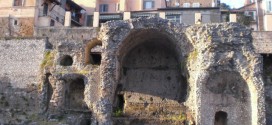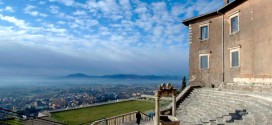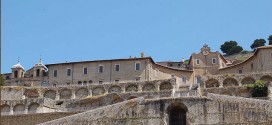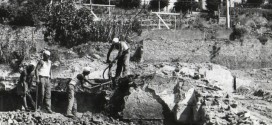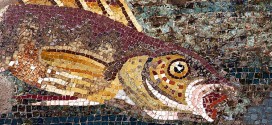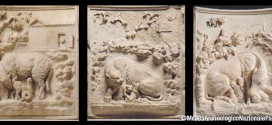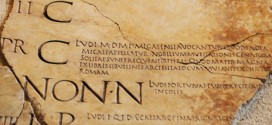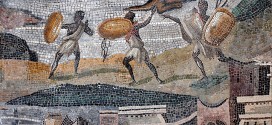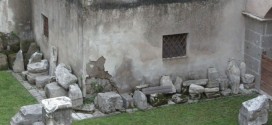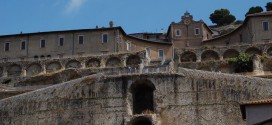While the archaeologists document the wealth and importance of Praeneste in Orientalizing and Archaic age, the first news handed down by the ancient authors are only at the beginning of the Republican era, whan the contrasted relatioships with Latin League are remembered. We also know that at the end of 5th century BC members of the most prominent prenestine families, …
Read More »admin
The archaic age (6th-5th century BC)
For the period of Archaic age the testimony about necropolis are much more limited/rare, although still demonstrate a continuity of relationships with the Etruria, and we may assume that it is a period of crisis for the city of Palestrina, at least until the end of the 6th century BC, although it is possible that this lack of documentation depends …
Read More »Mythical origins and the oldest residental area of Praeneste
Ancient myths attribute the founding of the city to different characters; Greek sources lead back to Prainestos, son of King Latinus and grandson of Ulysses, or Telegono, son of Ulysses and Circe. Virgil, however, collects an Italic tradition according to which it is Caeculus to build the city, the blind son of the god Vulcan, killed by Aeneas. Even illustrious …
Read More »Bombings of 1944
On the 10th of June 1940, fascist Italy enters the war. After about three years of unsuccessful military campaigns on 10th of July 1943 the allies landed in Sicily. On 25th of July 1943 falls the regime, and on September the 8th Italy signs the Armistice and its territory get occupied by German troops. The resurgence of peninsula by Allied …
Read More »Mosaic of Pisces
The so-called Cave of Fates was originally a natural cave wich around the middle 2nd century BC was framed in a structure of tuff blocks and at the end of the same century was included in the complex of Forum. Splendid mosaic decoration (Mosaic of Pisces) dating back at the end of 2nd century BC, was unfortunately damaged by subsequent …
Read More »Grimani Reliefs
This plate belongs to a series of reliefs that are named after the first owner and which are now kept in the Kunsthistorisches Museum of Vienna. In ’70, repurposed in a building of the late Imperial age, was found the prenestin semple of Grimani Reliefs exhibited at the National Archaeological Museum of Palestrina together with marble copies of Viennese reliefs. …
Read More »Fasti prenestini
In Latium Vetus, the region around/nearby Rome where Praeneste was one of the major centres, each city had its own calendar that counted the seasons, but also local holidays. With the consolidation of Roman domination/control, the centers of Latium will nationalize one after another and within some time they’ll become hegemonic. However the ancient Fasti – the latin term for …
Read More »Nilotic mosaic
The absidal hall, at the Forum square of the ancient city, housed the great colored mosaic representing the scene of the Nile’s flood. It is a very refined floor, built on site by egyptian craftsmen from Alexandria in the 2nd century BC, whose scene is likely to be a copy of a large painting exhibited in the famous library of …
Read More »Roman and Greek temple
When it comes to ancient temples, imagination usually runs to Greek buildings, characterized by white marble arcades surrounding a cell and supporting triangular roofs decorated by famous sculpted pediments. This type of building, in fact, present in the Greek colonies in Italy since 7th century BC, spreads at Rome and amonge italic populations starting from 2nd century BC. Before that …
Read More »Building techniques
The monuments of Praeneste, whose construction is distributed over at least seven centuries of history, allows us to observe the evolution of building techniques in ancient times. The defensive walls, as well as the structures of terracing are built in polygonal work, also known as cyclopean masonry. Large irregularly shaped elements that are used in this technique – in Latium …
Read More » Archeopalestrina Percorso archeologico di Palestrina, l'antica Praeneste
Archeopalestrina Percorso archeologico di Palestrina, l'antica Praeneste
